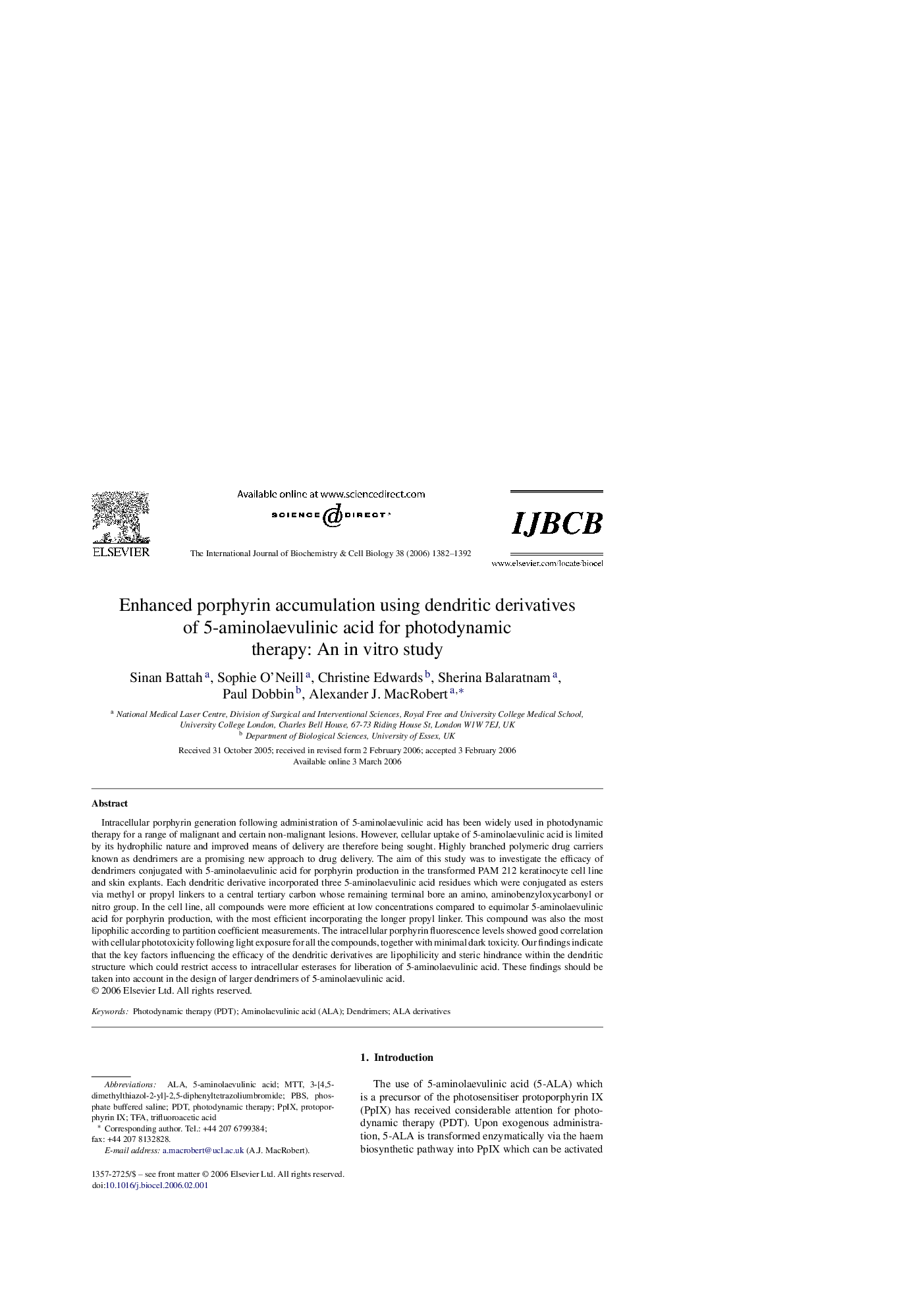| Article ID | Journal | Published Year | Pages | File Type |
|---|---|---|---|---|
| 1985147 | The International Journal of Biochemistry & Cell Biology | 2006 | 11 Pages |
Intracellular porphyrin generation following administration of 5-aminolaevulinic acid has been widely used in photodynamic therapy for a range of malignant and certain non-malignant lesions. However, cellular uptake of 5-aminolaevulinic acid is limited by its hydrophilic nature and improved means of delivery are therefore being sought. Highly branched polymeric drug carriers known as dendrimers are a promising new approach to drug delivery. The aim of this study was to investigate the efficacy of dendrimers conjugated with 5-aminolaevulinic acid for porphyrin production in the transformed PAM 212 keratinocyte cell line and skin explants. Each dendritic derivative incorporated three 5-aminolaevulinic acid residues which were conjugated as esters via methyl or propyl linkers to a central tertiary carbon whose remaining terminal bore an amino, aminobenzyloxycarbonyl or nitro group. In the cell line, all compounds were more efficient at low concentrations compared to equimolar 5-aminolaevulinic acid for porphyrin production, with the most efficient incorporating the longer propyl linker. This compound was also the most lipophilic according to partition coefficient measurements. The intracellular porphyrin fluorescence levels showed good correlation with cellular phototoxicity following light exposure for all the compounds, together with minimal dark toxicity. Our findings indicate that the key factors influencing the efficacy of the dendritic derivatives are lipophilicity and steric hindrance within the dendritic structure which could restrict access to intracellular esterases for liberation of 5-aminolaevulinic acid. These findings should be taken into account in the design of larger dendrimers of 5-aminolaevulinic acid.
